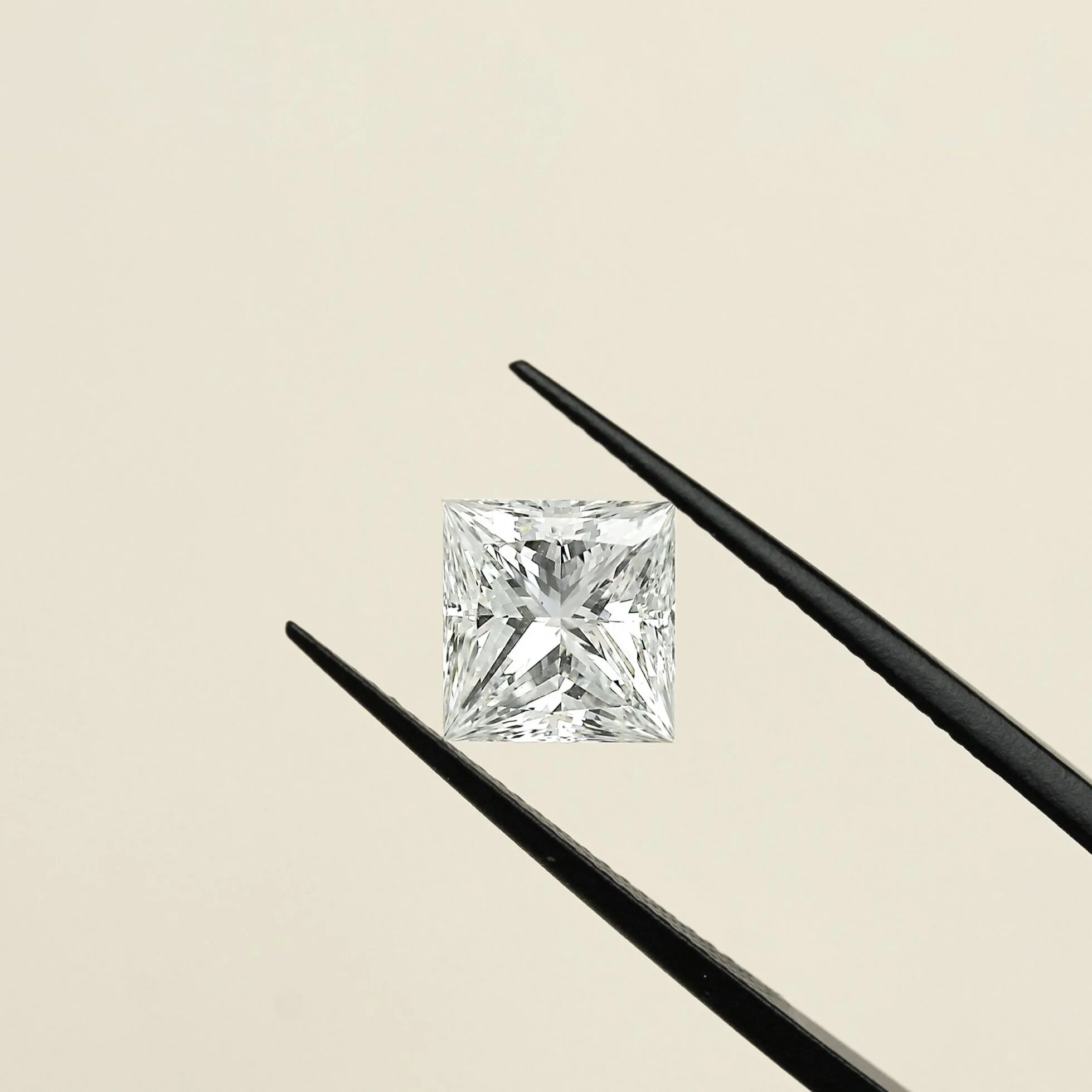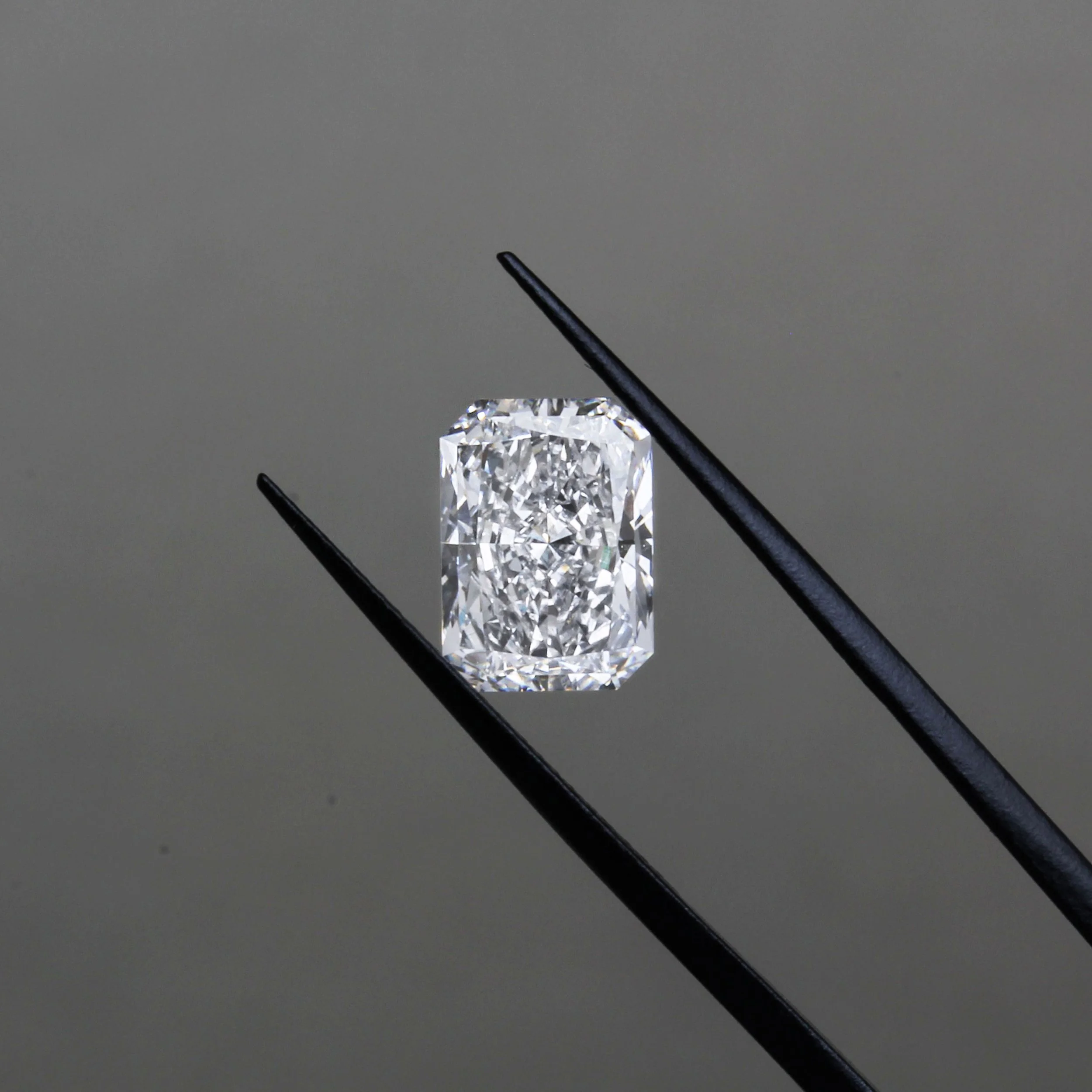LAB GROWN DIAMONDS VS. NATURAL DIAMONDS
Lab grown diamonds have emerged as a popular alternative to natural diamonds, due to technological innovation and ethical considerations. If you're new to lab grown diamonds, you might find our lab grown diamond guide particularly helpful. Despite their similarities, understanding the differences between lab grown and natural diamonds is crucial for making informed purchasing decisions – and we're here to assist with our 60 years of diamond expertise.
Chemical composition of diamonds
At their core, both lab grown diamonds and natural diamonds are composed of pure carbon atoms arranged in a crystal lattice structure. This fundamental similarity is why the two types of diamonds share the same dazzling brilliance and hardness.
Natural diamonds: Formed over millions to billions of years deep within the Earth’s mantle, natural diamonds are a result of intense pressure and high temperatures. These diamonds are a marvel of geological processes and are mined.
Lab grown diamonds: Created in controlled laboratory environments within a matter of weeks or months, lab grown diamonds are synthesised using advanced technology that replicates the natural conditions under which diamonds form.
How do lab grown and natural diamonds compare?
When it comes to physical properties, lab grown and natural diamonds are virtually indistinguishable. Here’s how they compare:
Hardness: Diamonds are renowned for their hardness, rated at 10 on the Mohs scale, which makes them the hardest natural material known. This attribute is consistent across both natural and lab grown diamonds.
Brilliance and fire: Both types of diamonds exhibit the same remarkable brilliance and fire. The brilliance refers to the amount of light that reflects off the diamond’s surface, while fire describes the dispersion of light into various colours. This optical performance is a result of their crystal lattice structure and is identical in lab grown and natural diamonds.
Inclusions and imperfections in diamonds
One of the few distinctions between lab grown and natural diamonds lies in their inclusions and imperfections. Here’s a closer look:
Natural diamonds: These diamonds often contain inclusions or imperfections formed over their long journey through geological processes. Common inclusions include tiny mineral crystals, gas bubbles, or other impurities trapped during formation. These imperfections can give natural diamonds unique characteristics and are used by gemologists to identify and grade them.
Lab grown diamonds: While lab grown diamonds can also exhibit inclusions, they tend to have different types of imperfections compared to their natural counterparts. For example, they may show metallic inclusions from the growth process.
Value: Lab grown vs. natural diamonds
The market value and pricing of diamonds are influenced by various factors, including rarity, demand, and perception.
Natural diamonds: Natural diamonds are valued highly due to their rarity and the labour involved in mining and processing them. They’re also recognised as a symbol of luxury which contributes to their higher price.
Lab grown diamonds: Lab grown diamonds are typically more affordable than natural diamonds, primarily due to the lower costs associated with their production. While they are chemically and physically identical to natural diamonds, the lower price point reflects their supply and the advancements in production technology. As consumer awareness and acceptance of lab grown diamonds grow, their market presence is expanding, offering a cost-effective and ethical alternative.
Choosing the right diamond
We understand that choosing between a lab grown and a natural diamond can be a nuanced decision. To help guide you through this process, we offer personalised consultations where you can view a curated selection of both lab grown and natural diamonds side-by-side. This hands-on experience allows you to compare their qualities directly and receive expert advice tailored to your preferences and needs. We will assist you in finding the perfect diamond that aligns with your values, budget, and style.
Some factors to consider below:
Budget: If cost is a significant factor, lab grown diamonds offer a more cost-effective option without compromising on quality or appearance.
Ethical preferences: Regardless of your preference, we are committed to ethical sourcing. We provide only ethically sourced diamonds that adhere to the Kimberley Process, ensuring that every gemstone is conflict-free and responsibly sourced. If sustainability and ethical considerations are important to you, lab grown diamonds do have a reduced environmental impact.
Personal values: For some, the appeal of a natural diamond’s unique formation process may outweigh the benefits of lab grown diamonds. As a family deeply rooted in the diamond industry, natural diamonds are our bread and butter. We never tire of the natural beauty that only Earth-created diamonds can offer.
Investment: If you view your diamond purchase as an investment, natural diamonds retain higher value over time due to their rarity.
Lab grown diamonds and natural diamonds both offer exceptional beauty and quality, but they cater to different preferences and values. Understanding their similarities and differences can help you make an informed decision that aligns with your needs and priorities.
By considering factors such as chemical composition, physical properties, inclusions, and market value, you can choose the diamond that best fits your lifestyle and values. As the diamond industry continues to evolve, both lab grown and natural diamonds will play important roles in shaping the future of fine jewellery.


